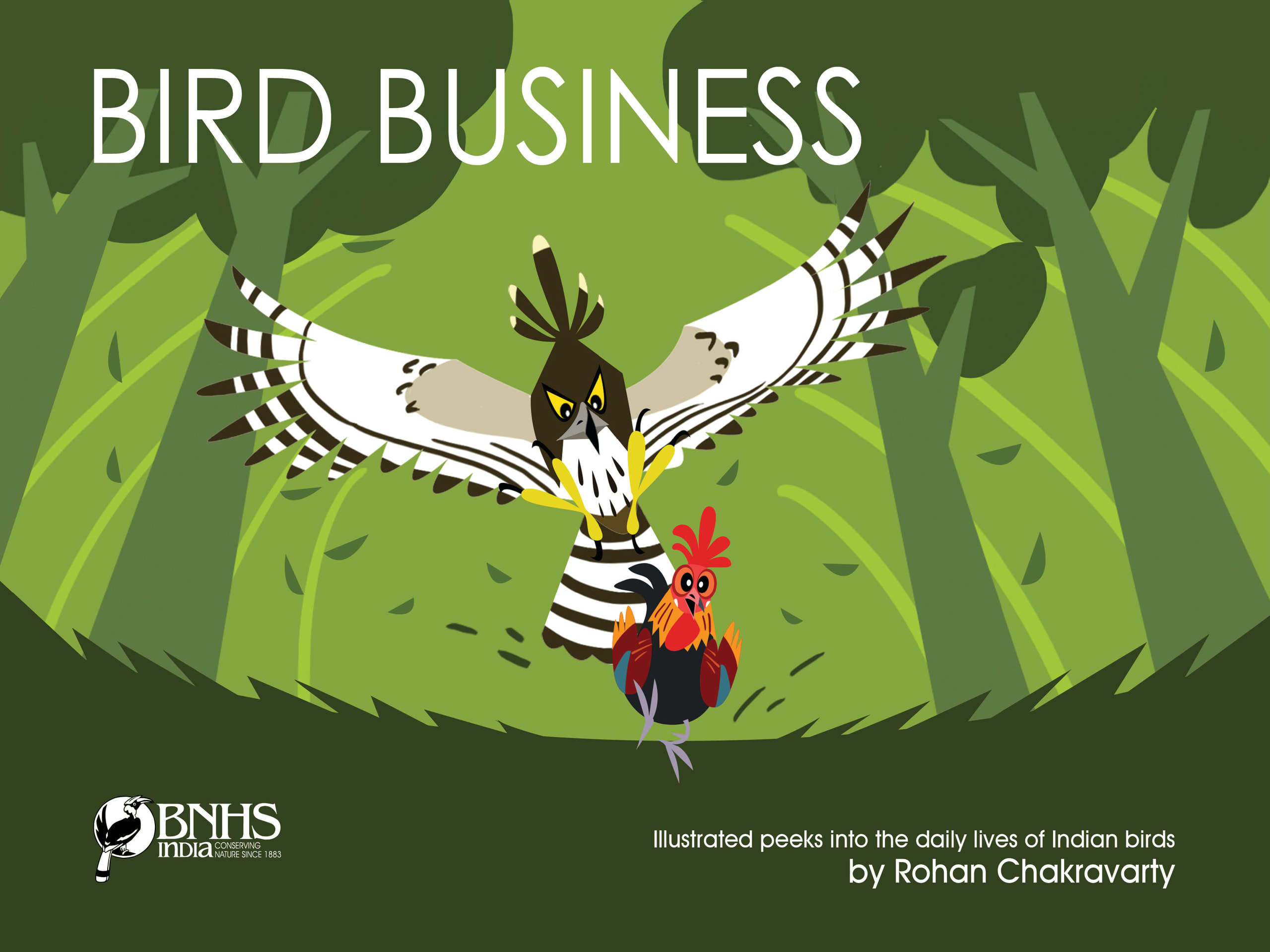 Listen to this article
•
15:34 min
Listen to this article
•
15:34 min
‘What is a bird?’ Everyone has an answer to that question. ‘Which is your favourite bird?’ We all have a favourite bird by now, I’m sure. ‘What does your favourite bird do all day?’ Now that is a tricky one. Field guides seldom address this question. Encyclopaedias do, but leave most of the visuals to our imagination. Ornithologists know the answer, but they are busy dissecting owl pellets most of the time. ‘Bird Business’ offers a glimpse into the daily lives of birds from the Indian subcontinent through illustrations. Illustrated sequences take you through the specialties of each species and its role in nature.
The book is more a celebration of the diversity in bird behaviour rather than of bird species. I hope that the book will enable the birdwatcher to appreciate the romance of watching birds better and entice the uninitiated into the vivid avian world.
India has close to 1,300 species of birds, all unique from one another in riveting ways. This book describes the antics of about a hundred. Flip over, read, revel!
Amur Falcons galore!
Right on top in the raptors’ Guinness records for migration, the charming Amur Falcons undertake an epic journey from Manchuria to Southern Africa each year, stopping over in northeast India to refuel. Their arrival coincides perfectly with the emergence of alates, winged termites, that are a preferred snack. A number of villages such as Doyang in Nagaland that used to hunt these migrating falcons for the table on a massive scale have now turned into protected havens for tens of thousands of these guests, where you may find structures named in honour of the species (Amur Falcon Home Stay, Amur Falcon Beauty Salon, to name a few!).
Expert hunters on the wing, Amur Falcons take smaller prey, mostly insects and small birds. After the brief stopover, they traverse the Arabian Sea all the way to the African coast.
A Bengal Florican Courts
‘Love is a leap into the unknown,’ writes romance novelist Lisa Kleypas. For the Bengal Florican, leaping into the air is a way of grabbing his prospective mate’s attention. In his habitat of tall grasses, the male Florican can hope to capture a female’s sight only when airborne. The jump is combined with an aerial display of the white wings contrasting with the dark body, and it is the contrast that the lady likes. A large tuft of neck feathers is unfurled, and the Florican puts in his hundred per cent in every leap before he lands.
Floricans belong to the family of bustards, among the heaviest of flying birds. Bengal Floricans are critically endangered because of habitat loss.
A Black Kite Steals
It is remarkable how a tiny tweak by evolution can be a species’ defining talent. In the Black Kite‘s case, it is the fork in its tail. The sheer range of flight stunts this feature offers makes the Black Kite a scavenger as effective as no other in an urban setting. Gliding above a busy fish market, the Kite spots a freshly discarded fish head. A sudden swoop, dive and snatch, and the fish head is in the Kite’s possession before one can notice! And it is the forked tail that enables complicated aerial manoeuvres, swift and sharp turns to dodge power pylons, transmission lines and overhanging roofs. Black Kites are bold enough to use mobile towers as nesting spots.
Although the Kites are well equipped to hunt, which they do frequently, they prefer to scavenge from slaughterhouses, garbage dumps and road kills. Who does not like fast food?
An Oriental Darter Darts
‘Snakebird’ is an apt nickname for the Darter. It may seem awkward on the surface, but once underwater, the Darter virtually transforms into a serpent! Its webbed feet propel the bird towards its prey, while the incredibly long neck is used to manoeuvre the dart-shaped bill, stabbing the body of the fish through and through. When the Darter resurfaces, it tosses its meal up in the air before gulping it down.
To increase buoyancy and accelerate the pursuit of aquatic prey, the Darters and their close cousins, the cormorants, have lost the water-repelling properties of their feathers. As a result, they can be seen spending long hours holding their wings open in the sun to dry their feathers after each dive!










